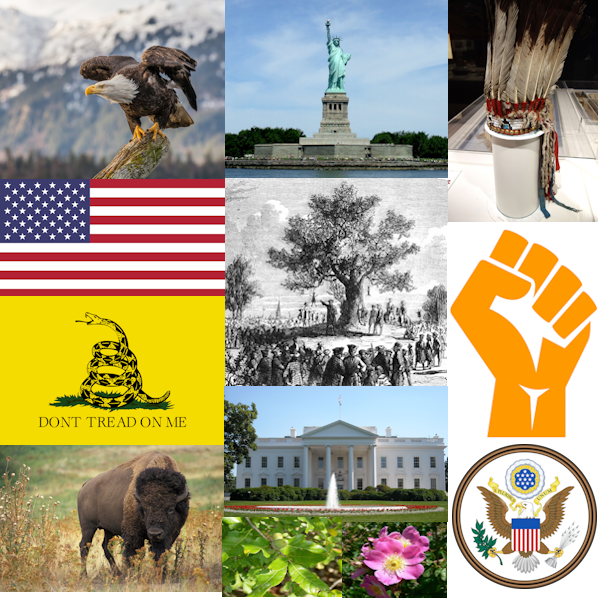The United States has many important symbols for freedom and liberty.
These include obvious and very recognizable icons such as the American flag and the Statue of Liberty.
Meanwhile, other symbols for freedom are much more subtle yet apparent in many forms of society.
Learn more about 16 important symbols for freedom and liberty in America.
Related Article – American Flag Hanging Vertically Meaning (& How To Do It Right)
Table of Contents
#1. American Bald Eagle

There is perhaps no single icon more recognizable for freedom and personal liberties compared to the American bald eagle.
Freedom is one aspect of humanity that many advanced societies have strived to achieve yet very few have accomplished.
Nonetheless, since the beginning of time, there has been a push to recognize individual rights and liberties.
The United States of America adopted the bald eagle as its national symbol and thus ranks prominently in displays that support the country.
Often, the American bald eagle (which is indigenous to North America) is connected with freedom and liberty.
The eagle is displayed frequently on the uniforms and associated weapons, gear, and transportation of the U.S. Armed Forces.
Furthermore, U.S. citizens often prefer to display symbols with an American eagle to represent their pride and admiration for the nation.
The American bald eagle was selected in 1782 by the Framers to serve as the national symbol for the country.
As such, the eagle is visible on many national symbols including on government buildings, currency, and the Great Seal (more details, below).
Be that as it may, Benjamin Franklin was reportedly not a fan of species due to their “bad moral character.”
Nevertheless, the eagle remains beloved to this day by countless American citizens who display it on anything and everything.
In the past, the American bald eagle has been associated with courage, strength, accountability, self-reliance, freedom, and vigilance.
The fierce hunter once bordered on the brink of extinction in North America but has made a heroic comeback. It was removed from the endangered species list in 2007, and estimates calculate it has quadrupled in population since.
#2. Liberty Tree
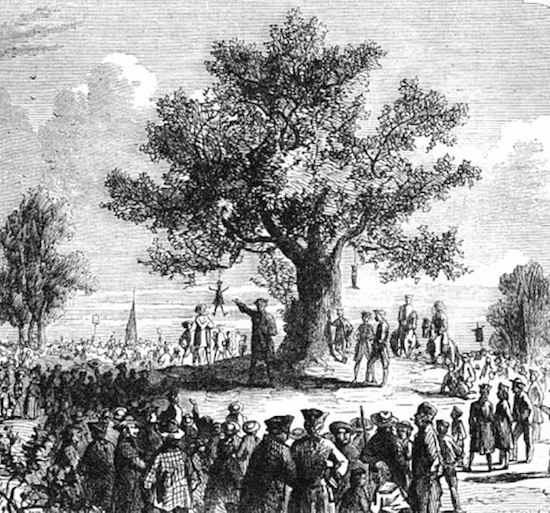
The Liberty Tree, not to be confused with the Liberty Bell (see, below) is one of many important American icons.
The Liberty Tree is a large elm that stood near the Boston Common.
It was here that the first public act of defiance occurred against British rule and managed to spread like wildfire throughout the colonies.
The Liberty Tree is often associated with the early seeds that planted the thought of a Revolutionary War against Great Britain.
After the first protest at Liberty Tree, the site transformed into a frequent gathering place for those disgruntled with the actions of the British Parliament.
Consequently, the tree was actually cut down by British troops upon their siege of the Boston harbor.
Be that as it may, many types of trees have transformed into American symbols for freedom and liberty across the nation.
In fact, the example of the Liberty Tree would go on to serve as a symbol of freedom during the French Revolution.
#3. Statue of Liberty
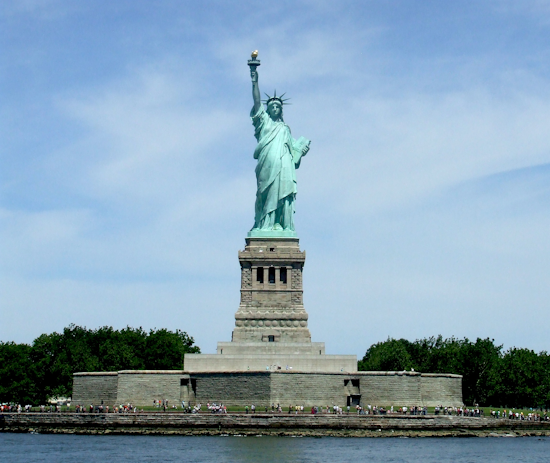
What is freedom?
The Merriam-Webster Dictionary defines it as “the condition of not being in prison or captivity.”
Moreover, being “free of restraints” and having the power of “political independence.”
As such, American landmarks like the Statue of Liberty are frequently connected to freedom and independence.
For many immigrants, the Statute of Liberty was the first landmark they discovered before embarking on Ellis Island.
The sculpture symbolizes Libertas, the Roman goddess of liberty, and is cherished by many in the Free World (not just the United States).
Therefore, it continues to represent one of the finest symbols for freedom in the United States.
The Statute of Liberty was actually a gift from the French acknowledging a new alliance following the conclusion of the Revolutionary War.
Lady Liberty was dedicated in 1886 and became recognized as a National Monument (discover more historic landmarks, below).
Today, many citizens of the United States continue to place great faith and hope in the famous image of American democracy.
Related Article – 16 Presidents That Did NOT Serve In The Military
#4. Feather
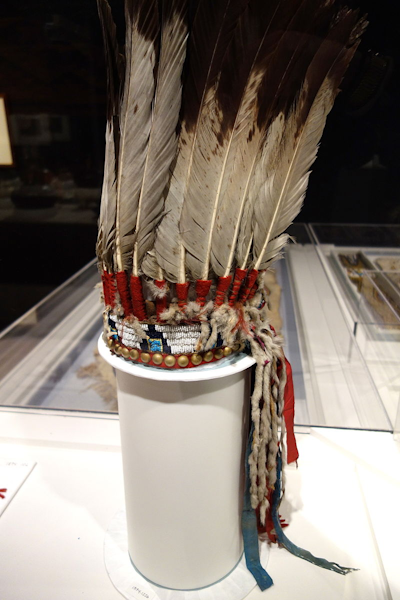
The feather is a long-standing symbol of freedom and independence for indigenous nations, the original inhabitants of North America.
It’s been documented that Native American tribes were deeply spiritual people who placed incredible reverence for ordinary objects and the environment.
Accordingly, many Native American nations placed insurmountable respect and admiration for the feather.
The feather, in many tribes, was associated with being a sacred symbol of strength, honor, power, and freedom.
Moreover, feathers were commonly awarded to proud and accomplished warriors for their bravery and courage.
Of course, this makes sense since birds (and, more specifically, wings) are common symbols for personal freedom in America.
Birds are frequent symbols for freedom because of their extraordinary ability to take flight at any moment.
Thus, they are not restricted by the ground and are truly able to explore the sky freely and without limits.
Also, worth noting, birds and feathers have a long-standing tradition within many religious faiths.
#5. American Flag
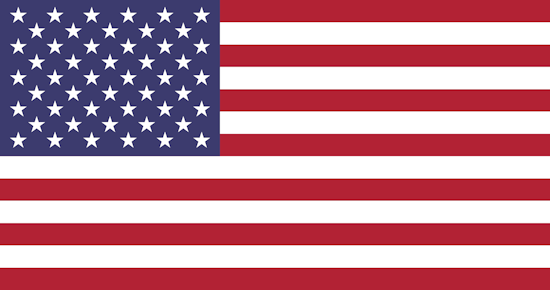
The American flag is another classic example of a symbol of freedom and liberty.
The Star-Spangled Banner (as it’s also known) was carefully designed with each element offering its own degree of symbolism.
First, the 13 red and white horizontal stripes are designed to represent the original 13 British colonies.
Secondly, the blue rectangle in the corner signifies independence from Great Britain with the incorporation of 50 stars / 50 states.
Today, people take the modern American flag for granted as it didn’t always feature 50 stars.
In fact, the current variation of Old Glory was established in 1959 by President Eisenhower.
The purpose of the new flag was to celebrate the inclusion of Alaska, which had recently become the 50th state of the Union.
Interestingly enough, President Eisenhower had over 27 flag designs to select from but eventually settled on the well-known variation.
The modern American flag is the longest-used version, having been displayed for more than 60 years.
Nevertheless, several modern variations of the U.S. flag continue to exist and many are frequently seen hanging from homes or automobiles.
Related Article – Upside Down American Flag Meaning: 7 Things You Didn’t Know
#6. White House & U.S. Capitol
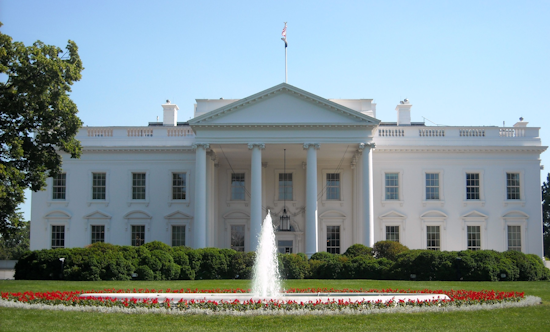
The White and U.S. Capitol are arguably the most important American landmarks in terms of symbolism.
The White House was erected in 1792, shortly after the nation adopted the U.S. Constitution.
Accordingly, President Adams was the first occupant of the White House and has been linked with the executive branch since then.
There are many who consider the Commander-in-Chief the “Leader of the Free World” in which he or she inherits tremendous power and responsibilities.
For this reason, the President of the United States is often seen as the person who protects the right to be free and live in a democracy.
The U.S. Capitol was constructed shortly after the completion of the White House in the 1800s.
It’s another popular symbol of American freedom and democracy since the legislative branch is tasked with passing bills to protect personal liberties, among other concerns.
Meanwhile, other noteworthy landmarks that are symbols for freedom and liberty in America, include:
- Washington Monument
- Lincoln Memorial
- Jefferson Memorial
- MLK Memorial
- Statute of Liberty
Of course, there are many other national and historic landmarks scattered across the country that are related to the pursuit of freedom and personal liberty.
#7. American Bison
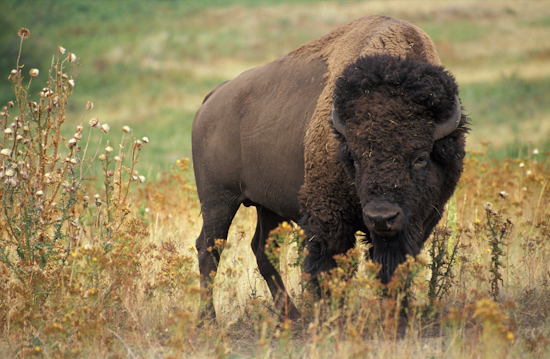
The American bison is an iconic symbol of the western frontier and many of the ideals that established the early identity of the country.
Despite this, the American bison wasn’t actually designated as a U.S. national mammal until 2016.
Be that as it may, bison have existed in North America since prehistoric times and narrowly escaped extinction.
Sadly, today, the numbers of their populations are not nearly as strong as before the 1800s, yet still are a prominent feature in Yellowstone National Park.
The largest land mammal native to North America is a majestic creature to catch with its herd in the prairie.
The bison was highly valued and sacred to many Native American tribes.
In fact, indigenous cultures viewed the bison as a symbol of abundance and sheer strength.
Native Americans were notorious for not letting a single part of the bison go to waste, a sharp contrast to how they were poached by some settlers moving westward.
Today, the American bison represents one of the great native animal species of North America, along with the bald eagle.
#8. Gadsden Flag
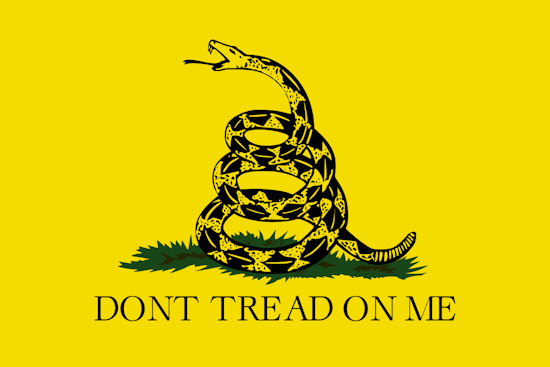
Today, freedom is commonly taken for granted even though it’s a relatively new concept in human history.
In the past, freedom and personal liberties were more of a privilege or exception, rather than a fundamental basic right.
However, the establishment of the United States of America sought to create a true democracy reflective of Greece or Rome.
The Age of Enlightenment spawned the notion that every individual is created equal and thus deserving of certain rights.
Anti-Federalists like Thomas Jefferson were adamant that it was necessary to include a Bill of Rights within the U.S. Constitution.
Even before then, images like the Gadsden flag were utilized during the Revolutionary War as a symbol of civil liberty.
Often, these flags were displayed to promote resistance to the government tyranny that was taking place in England.
Today, the Gadsden flag is at risk of being associated with extreme far-right movements. However, it has a much deeper, and more intriguing history than acknowledged.
The Gadsden flag may remain controversial but at its conception, it was designed to represent freedom and independence from British rule.
The rattlesnake on the flag is designed to signify independence, courage, and vigilance.
Related Article – American Flag With Gold Fringe Meaning
#9. Liberty Bell
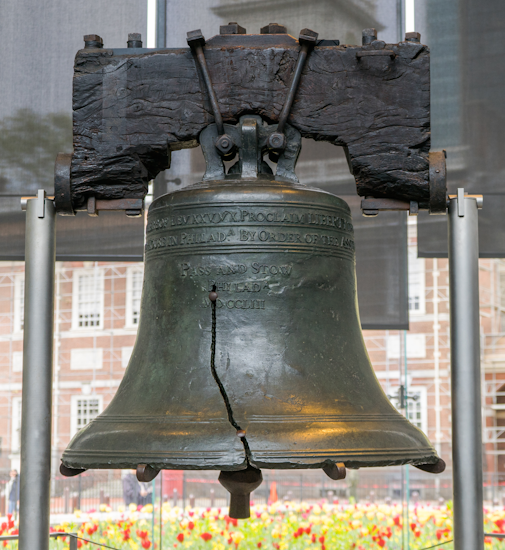
The Liberty Bell is one of the more famous symbols for American freedom.
It was previously known as State House Bell (or Old State House Bell).
The original purpose of the bell was to notify the public of legislative meetings and other gatherings.
In general, most people associate the Liberty Bell with its famous crack.
The bell actually has a long history of suffering damage, as the original one shipped from England cracked before arrival.
The Liberty Bell had a revival in popularity in the 1800s as a symbol against slavery.
Additionally, former occupants of Soviet-occupied Europe claim that the Liberty Bell was a symbol of hope and encouragement during that era.
Today, people may visit the Liberty Bell, which is displayed next to Independence Hall.
#10. The Rose

The rose is the national flower of the United States of America.
For this reason, the beautiful flower takes a tremendous role in national symbolism.
There are many Americans who hold value in roses not only for their various colors and vibrant petals, but also as symbols of love, life, and devotion.
President Reagan issued a proclamation in 1986 making the rose the official flower of the nation.
It was fitting considering the announcement was made in the White House Rose Garden.
Interestingly enough, there is evidence that roses have been in North America for over 35 million years.
Today, more than 20 native species of wild roses exist throughout the United States.
#11. Wild Horses
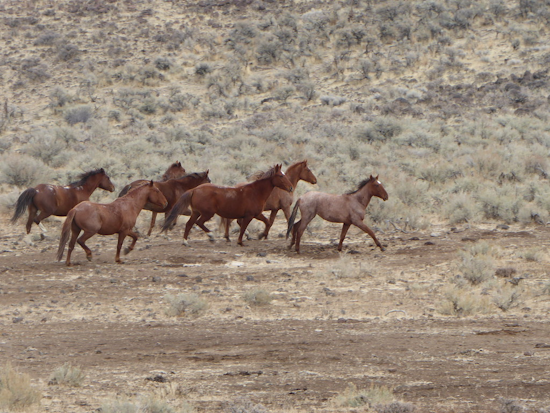
Wild horses, like American bison, capture the western frontier like few other images.
These incredible animals have often been depicted in movies and advertisements.
The classic image of a cowboy riding off into the sunset has been painted on the memories of many U.S. citizens.
Often, wild horses (and horses, in general) are connected with power, strength, wealth, perseverance, and endurance.
Furthermore, most regard the push West during the 19th and 20th centuries as a tremendous accomplishment in American history.
The horse was a tremendous resource for both early European settlers, as well as southwestern Native American tribes.
#12. Raised Fist

The raised fist is a controversial symbol of freedom and independence in American history.
Freedom is symbolized differently in various cultures and contexts.
Thus, many disadvantaged groups have sought over time to utilize a raised or clenched fist as a powerful source of demonstration.
The raised fist may represent defiance and aggression to some citizens, while others view these acts as necessary symbols needed to fight for freedom and personal rights.
As such, some regard the raised or clenched fist as an act of unity or solidarity.
The First Amendment protects the right to peacefully assemble and protest the government against injustice.
For this reason, the raised fist was commonly seen at demonstrations during the 1960s and 70s, leading up to the Civil Rights Movement.
Related Article – Air Force Symbol (Logo) Explained
#13. Broken Chains

Broken chains are a subtle yet commonly used symbols for freedom and independence in America.
In fact, at the bottom of the Statute of Liberty are broken chains designed to commemorate the end of slavery in America.
Unfortunately, chains have a long connection to American slavery, which is why the image of them being broken off is so powerful to many citizens.
Moreover, the appearance of broken chains was a common symbol utilized during the French Revolution.
As a result, it makes sense that chains are usually associated with restraining someone and keeping them under your control.
Whereas, broken chains represent the complete opposite, a break from tyrannical rule or authority.
Thus, broken chains usually mean freedom from bondage and other devices that hold people captive in societies.
#14. The Open Road

The open road is an underappreciated value in American society.
It’s very much like national parks and open spaces, a privilege that most of the rest of the world does not get to enjoy.
So, the next time you hit the road you may also want to appreciate how much this reflects the free and independent American spirit.
Generally, the open road is connected to the ability to roam and explore, once again not restrained by any powerful authority.
Liberty is defined as “the condition of being free from confinement or servitude.”
Additionally, the “right to engage in certain actions without control or interference by the government.”
The open road epitomizes these sentiments on liberty perhaps better than anything else in America.
#15. Great Seal of the United States
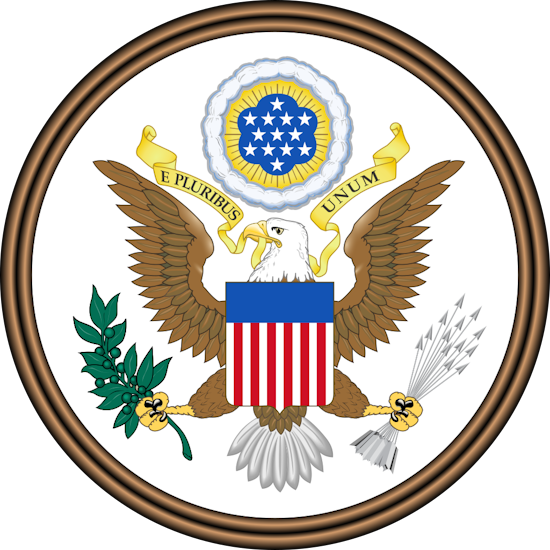
The Great Seal of the United States was designed by the original Continental Congress.
As such, the Great Seal has a long history as the official emblem of the United States of America.
The emblem is very recognizable in just about any part of the world given the incredible influence and power of the U.S. government.
The seal depicts a blue circle with another popular symbol of freedom — the American bald eagle.
The eagle is found holding an olive branch (symbolizing peace) and a bundle of 13 arrows (symbolizing war) in the other talons.
Meanwhile, the shield in front of the eagle is decorated with 13 red or white stripes to reflect the original 13 colonies.
Lastly, the Latin phrase e pluribus unum means “Out of many, one.”
The U.S. Great Seal is unique in that it’s found on many official documents (i.e. passports) along with the reverse side of the $1 bill.
#16. Oak Tree

Recently, the oak tree was declared the official national tree of the United States in 2004.
Interestingly enough, Americans of all ages were invited to vote on which tree they believed was the most deserving.
Thus, the oak tree was picked as the national tree after a nationwide poll made it the top selection.
For many, the oak tree reflects the resiliency and strength of the United States.
The oak tree emerges from a tiny acorn to become one of the most powerful trees on earth.
Additionally, there are nearly 50 different oak species which reflects well on the diversity and unique background of the United States.
The oak tree is also renowned for its gorgeous foliage and strong, hardy wood.
Meanwhile, pine trees are another popular representation of freedom and liberty in the United States.
Pine trees were abundant across the East Coast prior to the arrival of the Europeans.
The Iroquois Confederacy (which helped inspire the original Articles of Confederation) insisted on meeting under a pine tree.
Then, in the early days of the country, it was an important source for the developing economy of the nation.
Conclusion
There are many noteworthy symbols for freedom and liberty in the United States.
Some of these symbols are very pronounced and common, like the Liberty Bell and Statute of Liberty.
Meanwhile, other symbols are much more subtle or date back even before the founding of the nation.
- Ikon Pass Military Discount: Learn How To Save Big - January 31, 2025
- RTIC Military Discount: Find Out How To Save Big on Gear - January 30, 2025
- Traeger Military Discount: Learn How To Save Big on Smokers - January 28, 2025

